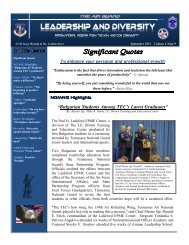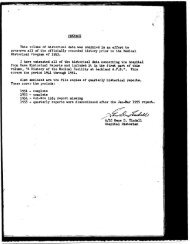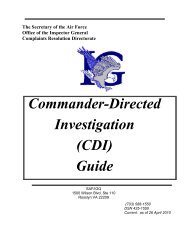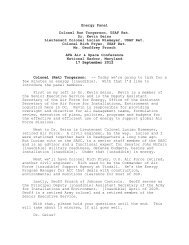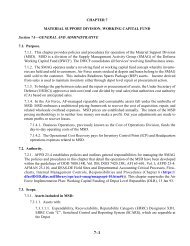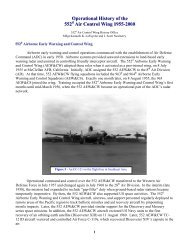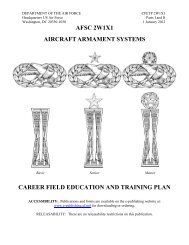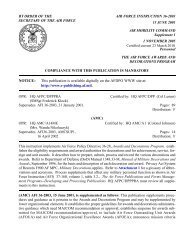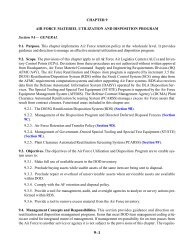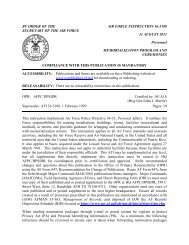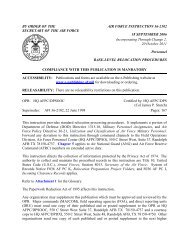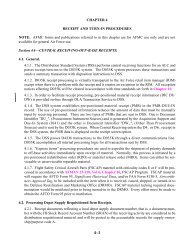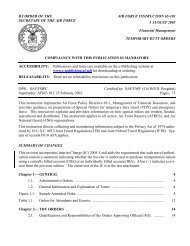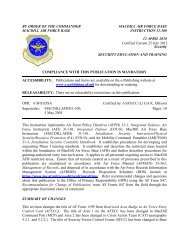AT-E-16 (DRAFT) - Air Force Link
AT-E-16 (DRAFT) - Air Force Link
AT-E-16 (DRAFT) - Air Force Link
You also want an ePaper? Increase the reach of your titles
YUMPU automatically turns print PDFs into web optimized ePapers that Google loves.
2.6 MESSAGE TYPES<br />
2.6.1 Message Designators<br />
A two-letter designator, unique to each message type, must be entered as the first field to<br />
identify the message for processing. The exception is a Correction Message, which is<br />
recognized without a designator when entered in response to a system generated error<br />
message.<br />
2.6.2 Explanations<br />
Flight Plan (FP)<br />
Amendment Message (AM)<br />
Departure Message (DM)<br />
Remove Strip (RS)<br />
General Information Message (GI)<br />
Hold Message (HM)<br />
Progress Report Message (PR)<br />
Test Device (TD)<br />
Strip Request (SR)<br />
Request ARTS Transfer (RF)<br />
ARTS NAS Cancellation (RX)<br />
Flight Plan Readout (FR)<br />
Altimeter Setting (AS)<br />
Weather Message (WX)<br />
Retransmit to ARTS (RB)<br />
Stereo Flight Plan (SP)<br />
Examples of FDIO messages are shown below, along with their corresponding message<br />
entry fields and the data that each field represents. Field numbers enclosed in<br />
parenthesis identify fields that are optional to the particular message type example. The<br />
following message types, with their designators, are acceptable from FDIO<br />
(Tower/Approach Control) locations:<br />
Note: In all message types, the flight plan to be identified may be selected by several<br />
means. The use of the computer identification number (CID) is most preferred.<br />
27



